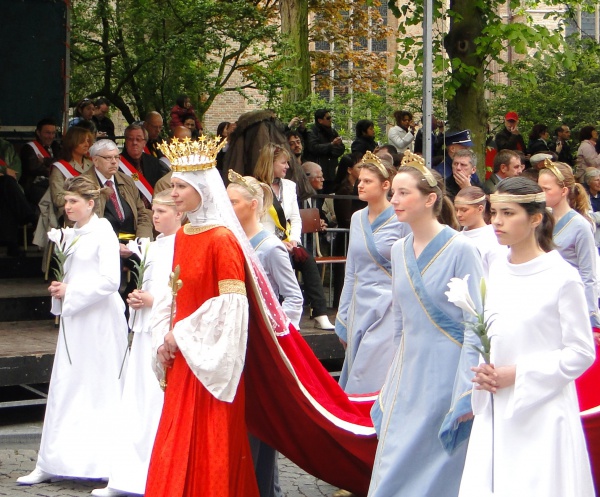Facts About Procession of the Holy Blood
The Procession of the Holy Blood is a cherished Catholic tradition that takes place in Bruges, Belgium, every Ascension Day. This event, which dates back to the Middle Ages, involves parading a sacred relic of holy blood around the city's streets. It commemorates Bruges' liberation from French rule in the 13th century.
The procession is a vibrant celebration, featuring historical reenactments, biblical performances, a Passion play known as the Jeu du Saint Sang, and a lively parade with various groups, animals, and floats. The highlight of the event is the Relic of the Precious Blood of Jesus, a revered artifact with origins tracing back to the Second Crusade. Although the procession has occasionally been canceled due to weather or health concerns, such as during the COVID-19 pandemic in 2020, its spirit remains strong.
Over 3,000 Bruges residents take part in this grand spectacle, often referred to as "Brugges' Schoonste Dag" or "The Most Beautiful Day in Bruges." The event is steeped in spiritual significance, attracting high-profile attendees, including bishops, priests, and diplomats. The day typically begins with a pontifical Mass at the cathedral, followed by the procession where clergy carry the relic, closely guarded by a brotherhood. This solemn and revered event captivates spectators, and in 2009, it was honored by UNESCO as part of the Intangible Cultural Heritage of Humanity.

 Luxembourg
Luxembourg